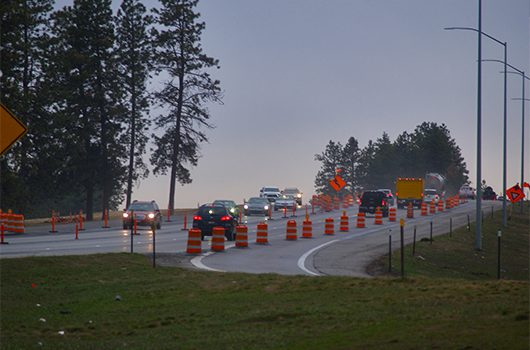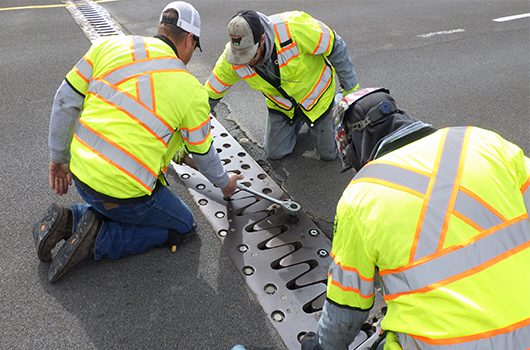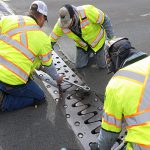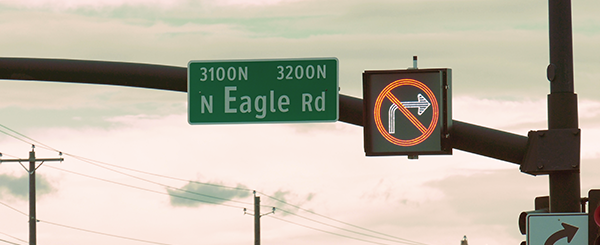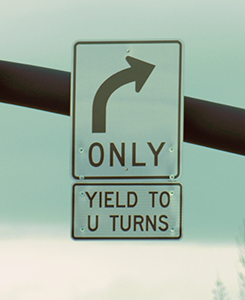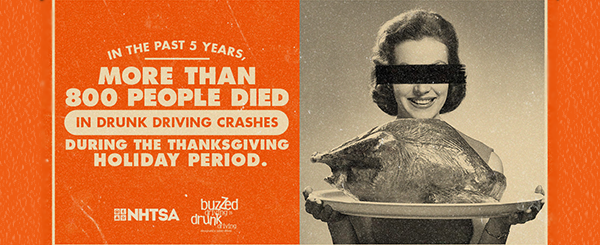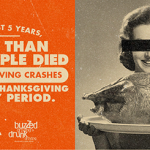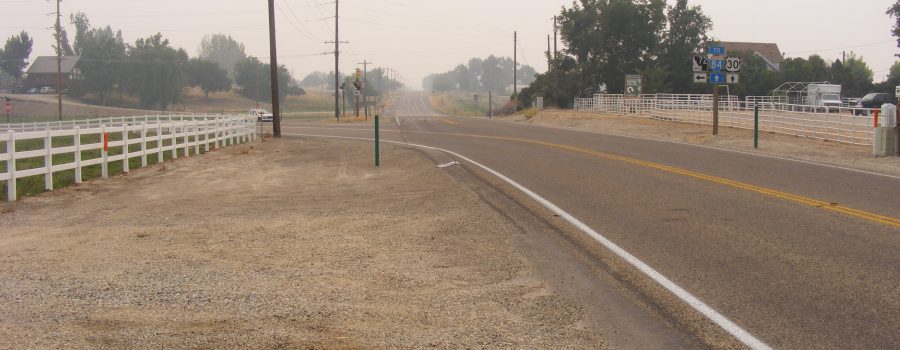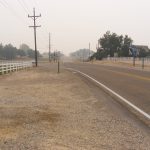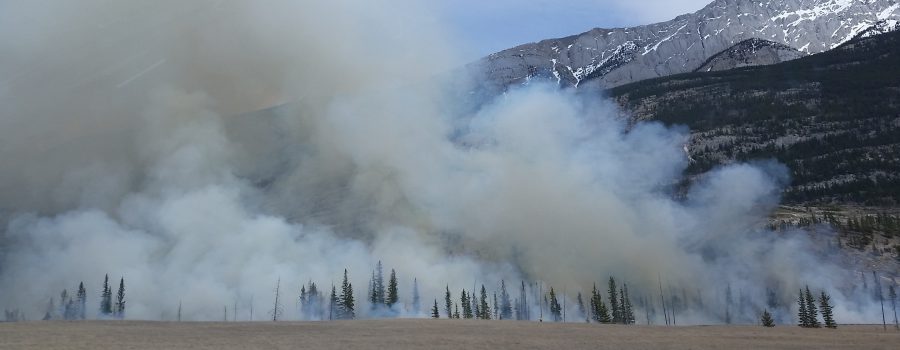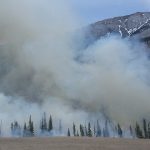System Interchange Construction in Full Swing
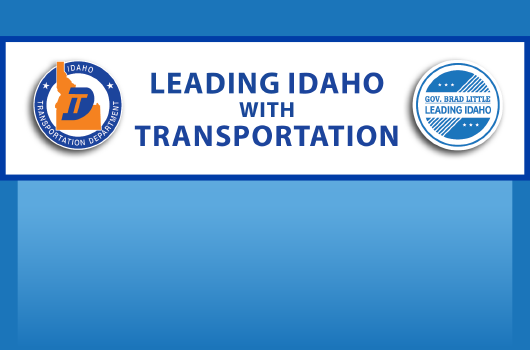
POCATELLO – The Idaho Transportation Department’s rebuild of the System Interchange for I-86 and I-15 at Pocatello is in full swing with crews working multiple areas throughout the worksite. As part of Governor Little’s Leading Idaho initiative, the project is quickly changing how the heart of the Interstate in Pocatello appears.
The lowering of the ramp for westbound traffic from northbound I-15 to I-86 is now complete and work on building the new bridges is beginning. Temporary barriers are in place at multiple locations and motorists will also notice changes in lane striping as traffic is shifted away from work areas.
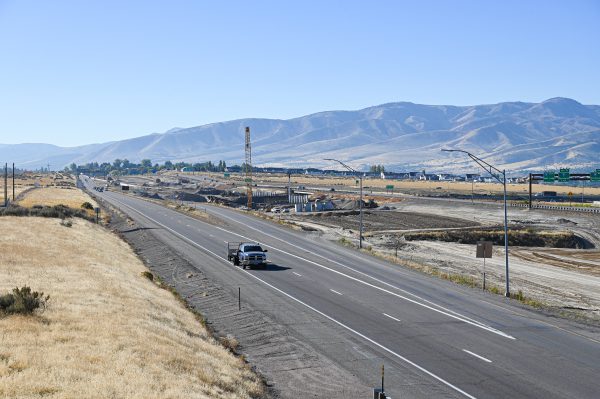
One safety innovation being implemented is the use of a conveyor belt system to move earth fill from one area of the project to another. The conveyor allows crews to move material without using trucks entering and exiting the Interstate. That makes for a safer work zone for drivers and work crews. It is important that public keep clear of the conveyor system for their own safety.
In the coming weeks cranes will appear on the project and begin drilling shafts for new bridge piers. Excavators and other earthmoving equipment are also working in multiple areas to reprofile the land. Throughout the work zone water trucks are being utilized to keep dust down. Inspectors and engineers are also on-site daily ensuring safety and compliance with designs.
Near the end of the month or early next month pile driving will begin in the northern portion of the work area. There will be some associated noise during this portion of the operation.
Speed limits in the work area are now set at 55mph and should always be carefully observed, day and night. Crews are working long hours including some night work. Drivers should also know that lane configurations are changing and should be prepared to adjust to the difference by watching for signs and following pavement markings.
It is especially important with such a large project that motorists plan for extra time and to be patient with other drivers by allowing them to merge and change lanes as needed. Sharing the road and watching for workers and construction vehicles entering the Interstate is essential to keeping everyone safe.
The historic rebuild of the I-86/I-15 System Interchange was the outgrowth of a need to replace aging bridges and improve safety. The bridges, built in the 1960s, are currently safe but needed to be replaced due to their age. Failure to do so would result in a need to place restrictive load limits which would hinder commerce.
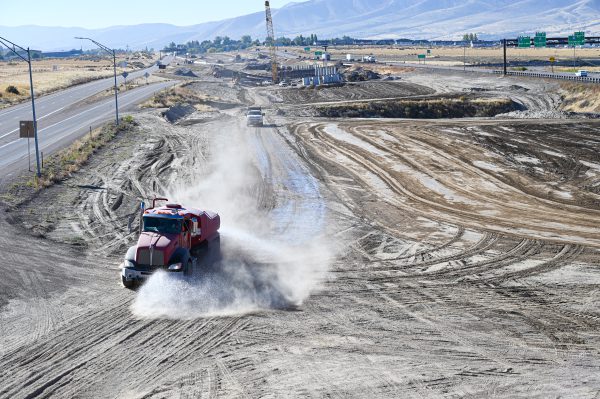
ITD also noted an increase in aggressive lane changes and congestion within the interchange, particularly just north of the Pocatello Creek exit. The rapid motion of entering I-15 at Pocatello Creek and crossing to the passing lane to exit toward Chubbuck did not exist when the interchange was built. However, with population growth and associated development that traffic is now significant. Such “exit left” and “enter left” movements do not meet driver expectations, cause confusion, and results in frustration for drivers.
Another much-needed improvement was a redesign of the Chubbuck Road crossing. The old 1962 bridge is narrow and has limited capacity for pedestrians and bicyclists. With the growth of Pocatello and the addition of the Portneuf Wellness Complex a significant change was needed. ITD’s new design changes Chubbuck Road from being an overpass over I-15 to an underpass beneath the freeway with dedicated bike lanes and wider sidewalks. Removal of the bridge also creates more space for the larger project to handle increased traffic.
Once completed, the new System Interchange will be safer and ready to carry the increased traffic volumes for the fastest growing state in America.
This video describes how the new interchange will work and improve mobility and safety for the public – https://youtu.be/KRdVBAyXweA
Project details and updates are available here on ITD’s projects website https://itdprojects.org/projects/i-86-i-15-system-interchange/
This project is partially funded with Transportation Expansion and Congestion Mitigation (TECM) funds as part of Governor Little’s Leading Idaho initiative. The program allows ITD to accelerate project timelines to address rapid growth and build critical infrastructure today that would otherwise take many years to fund and build.
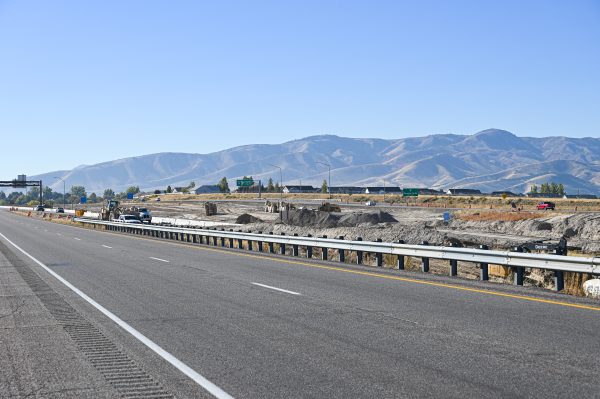
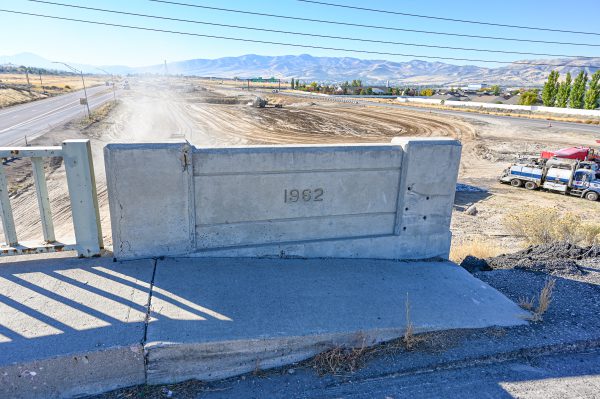
—

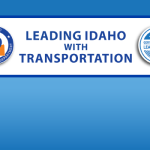
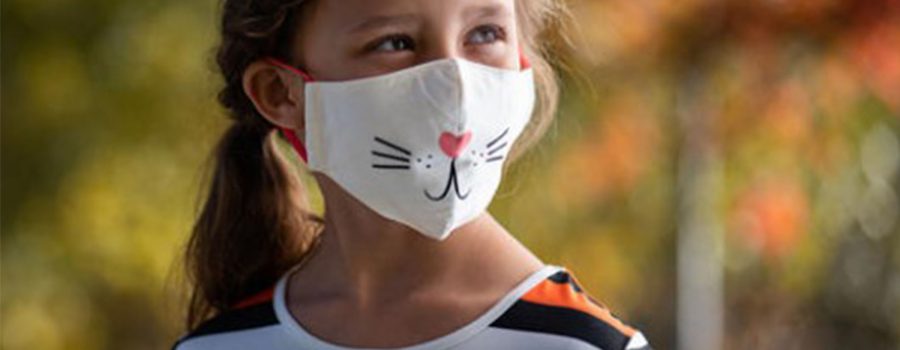

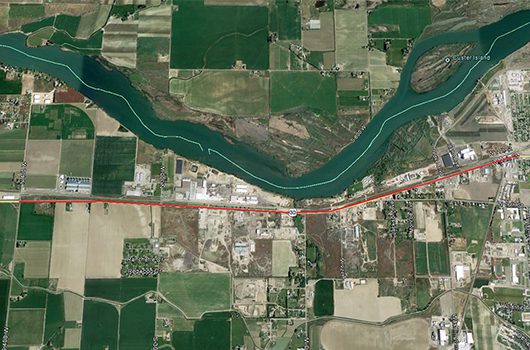
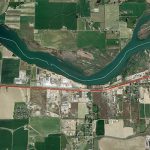

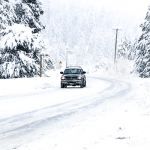
 With this in mind, I decided to sit down with our south-central Idaho Law Enforcement Liaison, Scott Bolen. Corporal Bolen has served with Idaho State Police for five years. He’s seen a lot of incidents on Idaho roads during his tenure with ISP. Corporal Bolen offered some insight and advice to benefit all motorists navigating Idaho roads this season.
With this in mind, I decided to sit down with our south-central Idaho Law Enforcement Liaison, Scott Bolen. Corporal Bolen has served with Idaho State Police for five years. He’s seen a lot of incidents on Idaho roads during his tenure with ISP. Corporal Bolen offered some insight and advice to benefit all motorists navigating Idaho roads this season.